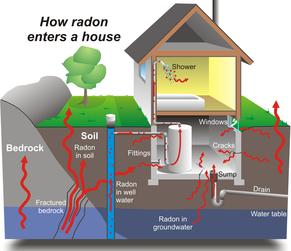Radon Testing
Why choose First-In Home Services to test for Radon :
The EPA recommends:
If you are buying a home or selling your home, have it tested for radon.
For a new home, ask if radon-resistant construction features were used and if the home has been tested.
Fix the home if the radon level is 4 picoCuries per liter (pCi/L) or higher.
Radon levels less than 4 pCi/L still pose a risk, and in many cases, may be reduced.
Take steps to prevent device interference when conducting a radon test.
The EPA estimates that radon causes thousands of cancer deaths in the U.S. each year.
* Radon is estimated to cause about 21,000 lung cancer deaths per year.
The numbers of deaths from other causes are taken from the Centers for Disease Control and Prevention’s 1999-2001 National Center for Injury Prevention and Control Report and 2002 National Safety Council Reports.
Radon is a cancer-causing, radioactive gas.
You cannot see, smell or taste radon. But it still may be a problem in your home. When you breathe air containing radon, you increase your risk of getting lung cancer. In fact, the Surgeon General of the United States has warned that radon is the second leading cause of lung cancer in the United States today. If you smoke and your home has high radon levels, your risk of lung cancer is especially high.
You should test for radon.
Testing is the only way to find out your home’s radon levels. The EPA and the Surgeon General recommend testing all homes below the third floor for radon.

Read more about The Dangers of Radon

